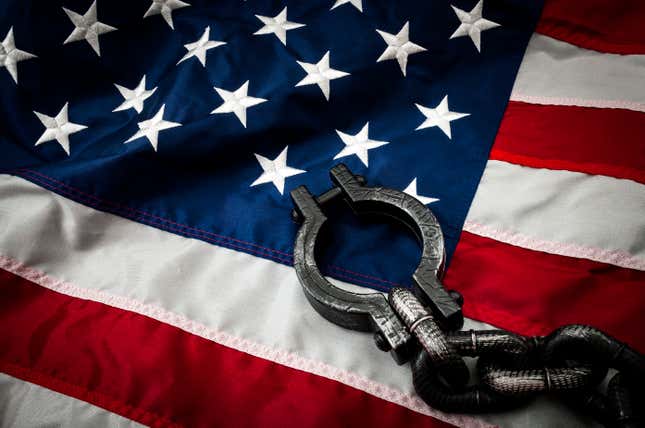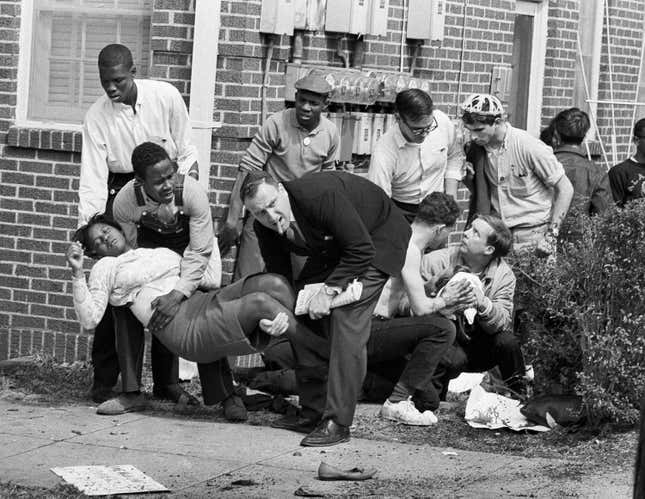
For years, Cudjo Lewis was recognized as the last survivor of the U.S. slave trade. His life’s story was told in news reports, history books and—most notably—in Zora Neale Hurston’s 2018 bestseller Barracoon. But new research has revealed that the last survivor of American slave trading appears to be an abductee on the same slave ship who outlived Lewis by two years.
Her name is Redoshi.
According to Newcastle University, painstaking research from historian Dr. Hannah Durkin tells the story of Redoshi, a woman who was kidnapped from Africa as a child by white slave traders who were engaged in the illegal importation of slaves after it was outlawed in America. Redoshi, also known as Sally Smith, lived until 1937, making her the last known survivor of the Transatlantic holocaust.
In 1860, 52 years after the importation of human chattel was outlawed in the United States, the Clotilda, a two-masted schooner, sneaked into Mobile Bay near Mobile, Ala., returning from a secret mission in Benin, Africa. Captained by William Foster, the Clotilda unloaded its precious cargo: 116 kidnapped human beings.
When federal authorities discovered that Timothy Meaher, a wealthy Mobile plantation owner, had made a bet with his friends that he could sneak a shipment of slaves into the country, they decided to investigate the crime. To hide their misdeeds, Foster rushed to the Clotilda and set it on fire. The vessel sank to the bottom of the ocean, never to be seen again. The stolen Africans were eventually sold and worked as slaves until they were emancipated in 1865.
In 1931, writer Zora Neale Hurston spent months talking to Cudjo Lewis, who was then thought to be the last survivor of the slave trade. While Lewis, who was also known by his Yoruba name, Oluale Kossola, died in 1935, Redoshi would live for two more years, when she reportedly died at the age of 110. (Durkin believes this is an exaggeration but—to be fair—because black don’t crack, people may have assumed Redoshi’s age was somewhere between 27 and 453.)
According to Durkin’s investigatory research, Redoshi was sold to plantation forced-labor camp owner Washington Smith in Dallas County, Ala., who would go on to found the Bank of Selma. Redoshi married a fellow survivor of the Clotilda, who died in 1910s or 1920s. After she was emancipated, she continued to live on the plantation with her daughter and even became active during the infancy of the civil rights movement
And here is the sad part: It’s not that anyone didn’t know about Redoshi!
Durkin uncovered newspaper articles and media mentions of the formerly enslaved woman’s life. It turns out that Zora Neale Hurston interviewed Redoshi during Hurston’s initial work on Barracoon. Durkin found film of Redoshi, which is the only known footage of a survivor of the transatlantic slave trade. Civil rights pioneer Amelia Boynton even mentioned Redoshi in her memoir, a fact that underscores the erasure of black history—especially the history of black women.
Redoshi’s name is as forgotten to some as the work of Boynton, who was quite literally one of the founders of the modern civil rights movement. She became one of the first black registered voters in Alabama in 1934 and began teaching other black voters how to pass the then-legal literacy tests for voter registration. She became the first black woman from Alabama to run for Congress. And when Dr. Martin Luther King Jr. showed up for the “Bloody Sunday” Selma to Montgomery march, it was Boynton who made the call.
This is a picture of Amelia Boynton on Bloody Sunday:

Boynton wrote about meeting Redoshi and contrasted the peaceful life she enjoyed as a child in West Africa with the horrors of how she was treated by white men. Boynton also unearthed the fact that Redoshi’s captors forced her into becoming a child bride during the voyage on the Clotilda.
“Now we know that its horrors endured in living memory until 1937, and they allow us to meaningfully consider slavery from a West African woman’s perspective for the first time,” says Dr. Durkin, a literature and film professor at Newcastle University.
Although most of the information was publicly available, Durkin’s work, published in the Journal of Slavery and Abolition, tells Redoshi’s story in a narrative that was previously inaccessible. Durkin paints the picture of a complex woman and the brutality of chattel slavery by telling the story of one of the few people on earth to endure African abduction, chattel slavery and emancipation.
“Her resistance, either through her effort to own her own land in America or in smaller acts like keeping her West African beliefs alive, taking care in her appearance and her home and the joy she took in meeting a fellow African in the 1930s, help to show who she was,” said Durkin.
“The only other documents we have of African women’s experiences of transatlantic slavery are fleeting allusions that were typically recorded by slave owners, so it is incredible to be able to tell Redoshi’s life story.”

